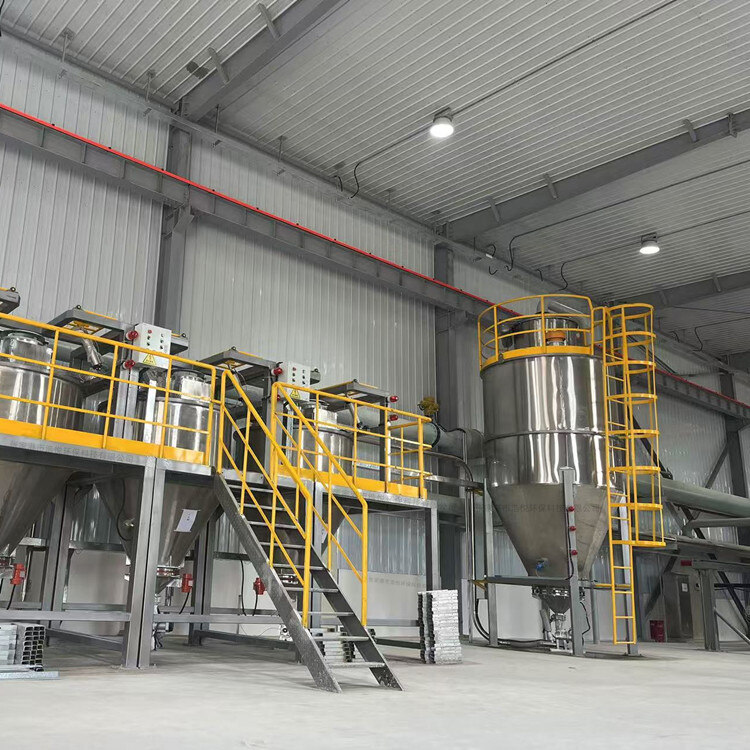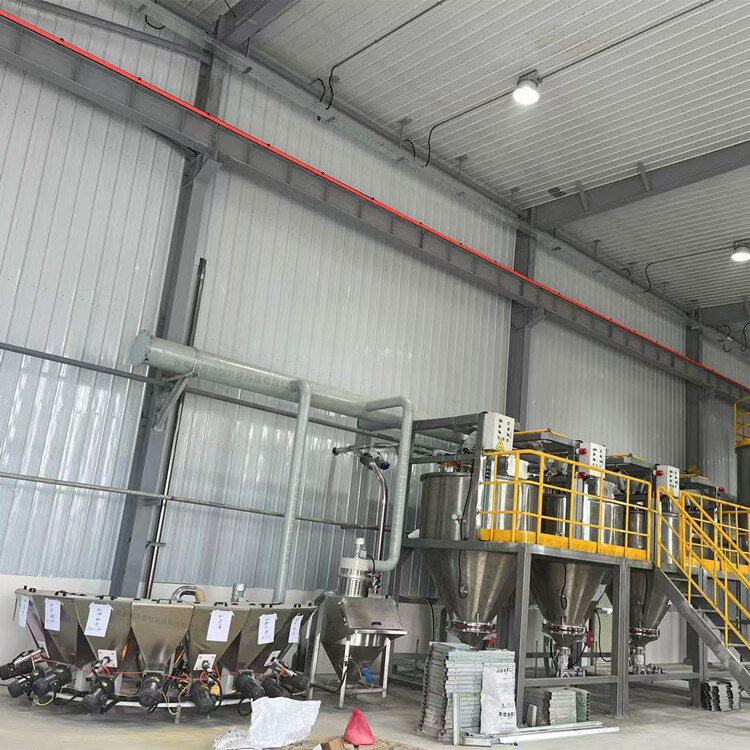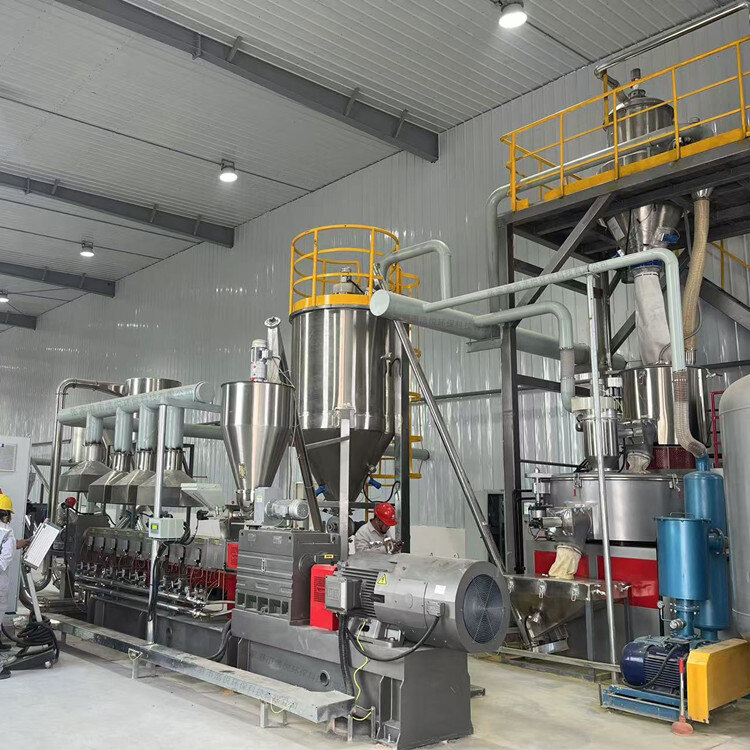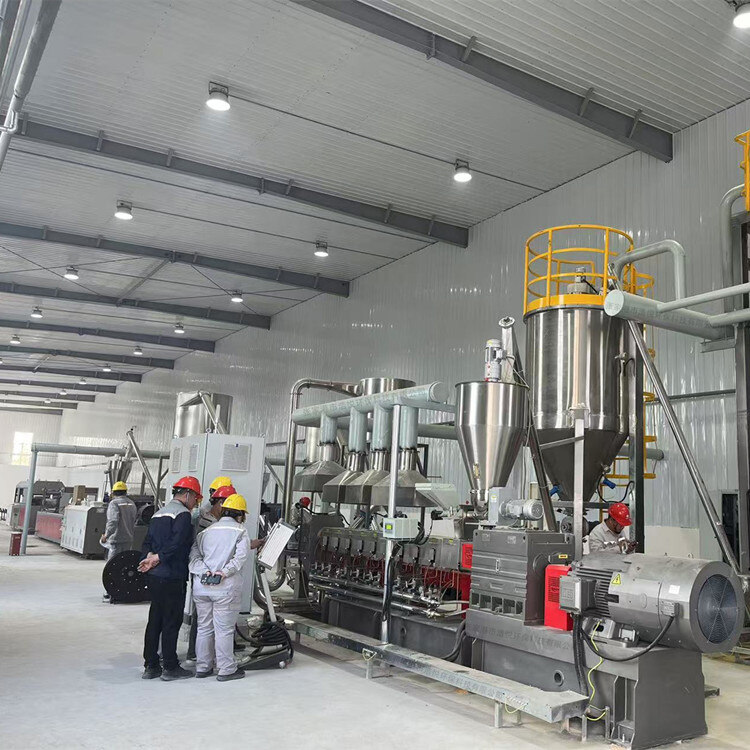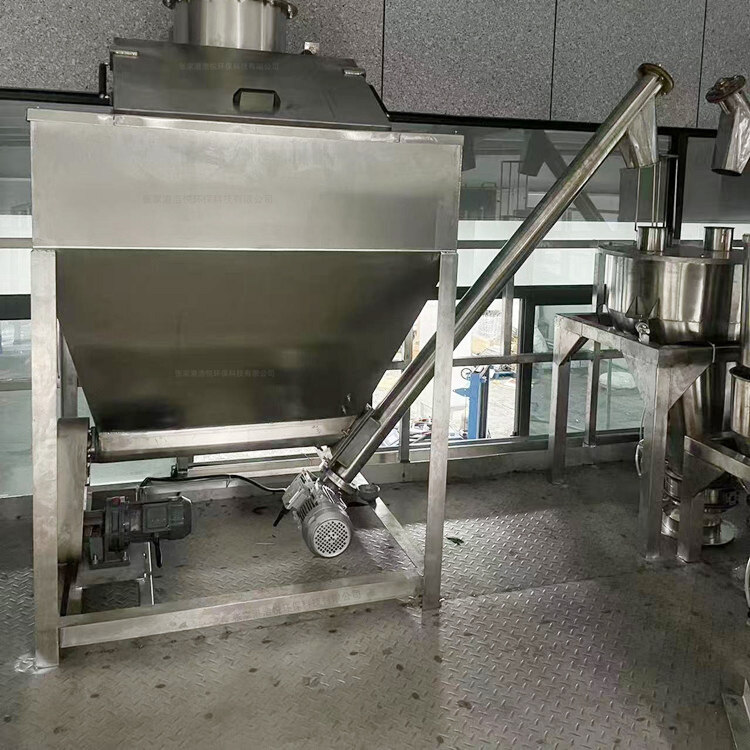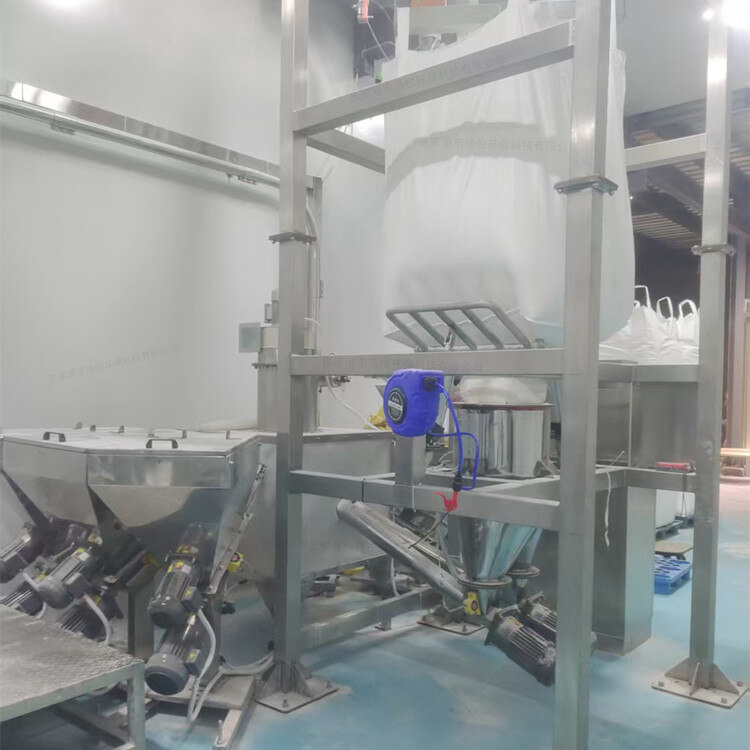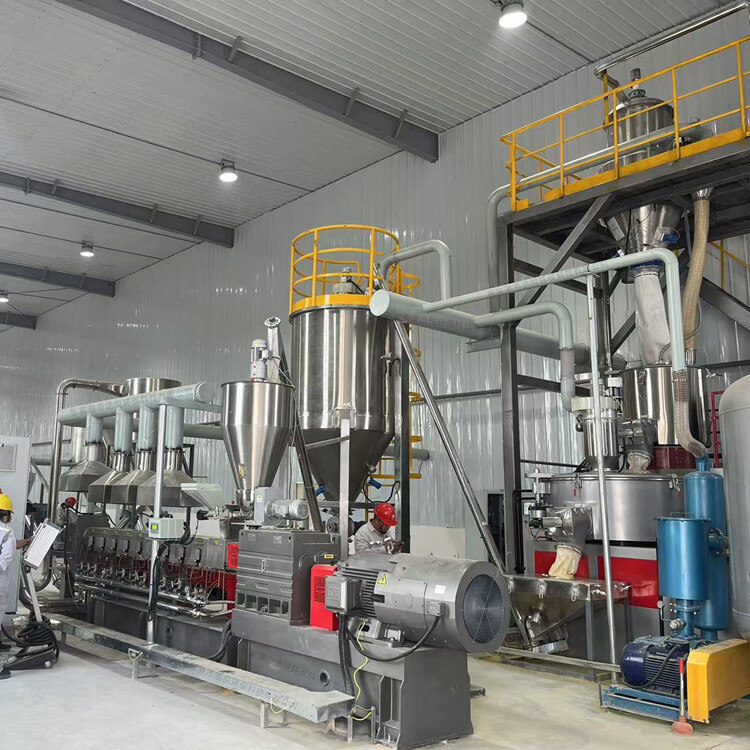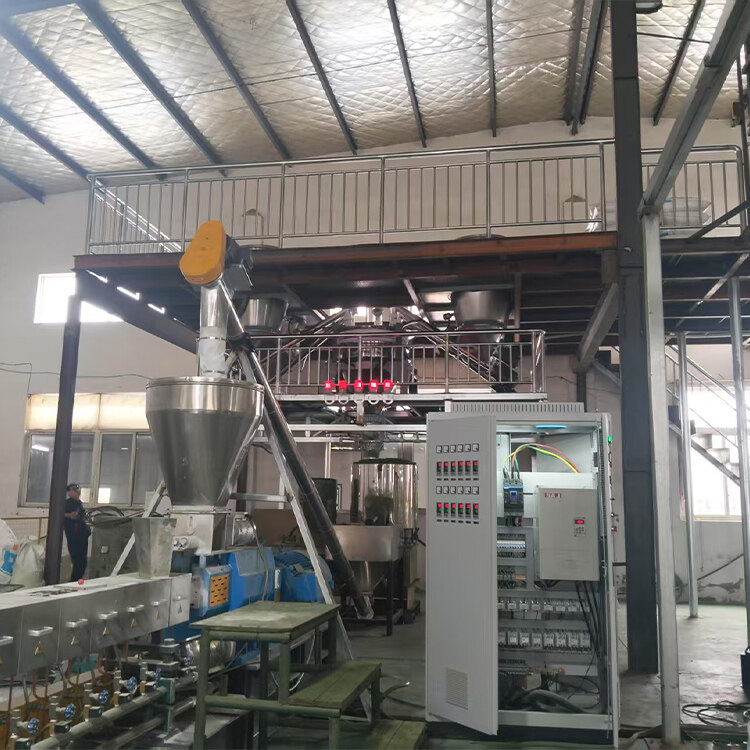- Introduction to automatic batching machine and fully automatic batching machine equipment
- The powder metering system tells you about the introduction of the mixing and drying machine
- 1000kg vacuum feeding machine
- Fully automatic small material batching system
- Research on Innovation of Automatic Weighing Machine Technology
- Design and operation of automatic batching system using PLC, industrial computer and frequency converter
Small material batching system
- Category:Batching Plant
- Hits:110次
- Release Date:2025-06-30
- Share:
- Inquiry
- Details
In modern industrial production processes, small material batching systems play an indispensable role. Small materials usually refer to materials that have a relatively small proportion in the production formula but play a key role in product performance, quality, and characteristics, such as additives in food, catalysts in chemical products, and active ingredients in the pharmaceutical industry. The small material batching system is an automated system that achieves precise weighing, proportioning, and conveying of these small and multi variety materials. Its performance directly affects the quality and production efficiency of the final product.
1、 Composition and working principle of small material batching system
(1) Core components of the system
The small material batching system generally consists of a material storage unit, a measuring unit, a conveying unit, a control system, and a software management platform. The material storage unit is responsible for the storage of small materials. Depending on the characteristics of the materials, different forms such as silos, buckets, and storage tanks can be used, and protective measures such as dust prevention, moisture prevention, and oxidation prevention should be taken. The measuring unit is the core of the system, and commonly used measurement methods include weighing measurement and volumetric measurement. High precision electronic scales and weighing sensors are key equipment for weighing measurement, which can achieve precise weighing at the milligram or even microgram level; Volume measurement is carried out through equipment such as screw scales and screw feeders, which quantitatively transport materials based on their volume. The conveying unit is responsible for conveying the measured small materials to the mixing or production process. Common conveying methods include pneumatic conveying, spiral conveying, belt conveying, etc. The appropriate conveying method can be selected according to the flowability, particle size, chemical properties, etc. of the materials.
(2) Workflow and Principles
The workflow of the small material batching system is based on preset production formulas and process parameters. Firstly, the operator inputs formula information into the software management platform, including the type, ratio, batch, and other data of small ingredients. After receiving the instruction, the control system drives the feeding equipment of the material storage unit to transport the small materials to the metering unit. The measuring unit monitors the material quantity in real time through weighing sensors or volumetric measuring devices, and automatically stops feeding when the set value is reached. Subsequently, the conveying unit is activated to transport the measured small materials in sequence to the mixing equipment or production station. Throughout the entire process, the control system continuously monitors and provides feedback on each link to ensure the accuracy of ingredients and the stability of the production process.
2、 Technical characteristics and advantages of small material batching system
(1) High precision measurement
The small material batching system can achieve extremely high measurement accuracy, usually with a weighing accuracy of ± 0.1% - ± 0.5%, thanks to high-precision sensors and advanced algorithms. For example, in the pharmaceutical industry, the trace addition of active ingredients must be precise to the milligram level. The small ingredient dispensing system uses dynamic weighing compensation algorithms to correct measurement errors caused by factors such as material drop and vibration in real time, ensuring the accuracy of drug ingredients.
(2) Automation and Intelligence
The modern small material batching system integrates automation control equipment such as PLC (Programmable Logic Controller), DCS (Distributed Control System) or industrial computers, combined with IoT, big data and artificial intelligence technologies, to achieve full process automation from batching plan formulation, execution to data recording. The system can automatically identify material types, intelligently adjust feeding speed and measurement parameters, and can also view equipment operation status and ingredient data in real time through a remote monitoring platform, early warning of faults, and improve production management efficiency.
(3) Flexible formula management
The small ingredient system supports the storage and quick switching of multiple formulas, which can meet the production needs of different products and batches. The operator only needs to select the corresponding formula in the software platform, and the system can automatically call the relevant parameters to complete the ingredient operation, greatly reducing the production time and improving the flexibility of the production line.
(4) Prevent cross contamination
In response to the characteristics of small materials with multiple varieties and easy mixing, the system has adopted strict pollution prevention measures in its design. Such as independent material conveying channels, rapid cleaning devices, sealed measuring units, etc., to avoid cross contamination between different materials and ensure product quality and safety, especially suitable for industries with high hygiene requirements such as food and pharmaceuticals.
3、 Application fields of small material batching system
(1) Food and beverage industry
In the production of food and beverage, the small ingredient system is used to precisely control the dosage of essence, spices, preservatives, nutrition enhancers and other additives. For example, in the production of baked goods, the precise ratio of small ingredients such as yeast, sugar powder, and leavening agents directly affects the taste, color, and shelf life of the product; During the beverage blending process, vitamins, juice concentrates, and other ingredients are accurately added through a small ingredient system to ensure consistency in product flavor and nutrition.
(2) Chemical industry
There are various types of small materials in the chemical industry, including catalysts, additives, and additives, which play a decisive role in the rate of chemical reactions and product performance. The small material batching system is widely used in industries such as plastics, rubber, and coatings. For example, in the production of rubber products, precise control of the dosage of vulcanizing agents and accelerators can improve the physical properties of rubber; Accurately adding pigments, dispersants, and other small materials in coating production can improve the quality indicators such as coating coverage and adhesion.
(3) Pharmaceutical industry
The pharmaceutical industry has extremely strict requirements for the accuracy and safety of small ingredient ingredients. The small ingredient system is used in the production process of pharmaceutical preparations to accurately weigh active pharmaceutical ingredients (APIs), disintegrants, lubricants, and other materials, ensuring accurate drug dosage and stable therapeutic effects. At the same time, the anti pollution design and strict cleaning verification process of the system comply with the requirements of Good Manufacturing Practice (GMP) for drug production, ensuring the compliance of drug production.
(4) Electronics and New Energy Industry
In the electronics industry, small material batching systems are used in semiconductor packaging, PCB board manufacturing, and other processes to accurately control the amount of small materials such as glue, solder paste, and flux, improving the reliability and stability of electronic products; In the field of new energy, the precise ratio of small materials such as positive electrode materials and electrolyte additives in the production process of lithium batteries directly affects the energy density, charge and discharge performance, and safety of the battery.
4、 The development trend of small material batching system
In the future, the small material batching system will develop towards a more intelligent, integrated, and green direction. The deep application of artificial intelligence technology will enable the system to have stronger self-learning and adaptive capabilities, and can automatically optimize ingredient parameters based on production data; Deep integration with enterprise ERP, MES and other management systems can achieve full process collaborative management of production planning, material inventory, and ingredient execution, improving supply chain efficiency. At the same time, with the continuous improvement of environmental protection requirements, the small material batching system will adopt more energy-efficient and low consumption designs to reduce dust emissions and material waste, achieving green production.


